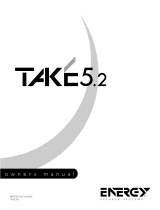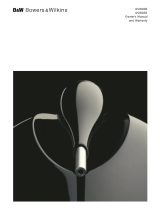5
English
PROFILE OF THIS UNIT
This unit incorporates a sophisticated, multi-program digital
sound field processor. The processor allows you to
electronically expand and change the shape of the audio sound
field from both audio and video sources, creating a theater-like
experience in your listening room. This unit has a total of 12
digital sound field processor (DSP) modes. You can create an
excellent audio sound field by selecting a suitable sound field
(this will, of course, depend on what you will be listening to),
and adding desired adjustments.
In addition, this unit incorporates a Dolby Pro Logic Surround
decoder and Dolby Digital (AC-3) decoder for multi-channel
sound reproduction of Dolby Surround encoded video sources,
and a DTS decoder for multi-channel sound reproduction of DTS-
encoded audio and video sources. The operation of the Dolby
Pro Logic Surround, Dolby Digital (AC-3) or DTS decoder can be
controlled by selecting a corresponding DSP program including
combined operations of DSP and Dolby Pro Logic Surround, DSP
and Dolby Digital (AC-3), or DSP and DTS.
This unit also features a built-in automatic input balance
control. This always assures you the best performance without
manual adjustment.
Digital Sound Field Processing
What is it that makes live music so good? Today’s advanced
sound reproduction technology lets you get extremely close to
the sound of a live performance, but chances are you’ll still
notice something missing, the acoustic environment of the live
concert hall. Extensive research into the exact nature of the
sonic reflections that create the ambience of a large hall has
made it possible for Yamaha engineers to bring you this same
sound in your own listening room, so you’ll feel all the sound of
a live concert.
Furthermore, our technicians, armed with sophisticated
measuring equipment, have even made it possible to capture
the acoustics of a variety of actual concert halls, jazz clubs,
theaters, etc. from around the world, to allow you to accurately
recreate any one of these live performance environments, all in
your own home.
Dolby Pro Logic Surround
This unit employs a Dolby Pro Logic Surround decoder similar
to professional Dolby Stereo decoders used in many movie
theaters. By using the Dolby Pro Logic Surround decoder, you
can experience the dramatic realism and impact of Dolby
Stereo theater sound in your own home.
Dolby Pro Logic employs a four-channel-five-speaker system.
The Pro Logic Surround system divides the input signal into
four levels: the left and right main channels, the center channel
(used for dialog), and the rear surround sound channel (used
for sound effects, background noise, and other ambient
noises). The center channel allows listeners seated in even
less-than-ideal positions to hear the dialog originating from the
action on the screen while experiencing good stereo imaging.
Dolby Surround is encoded on a lot of sound tracks of pre-
recorded video tapes, laserdiscs, and some TV/cable
broadcasts. When you play a source encoded with Dolby
Surround on this unit, the Dolby Pro Logic Surround decoder
decodes the signal and distributes the surround-sound effects.
Dolby Digital (AC-3)
Dolby Digital (AC-3) is a new generation of Dolby Surround
sound system which is a spatial sound processing format
developed for 35 mm film-movies by employing low bit-rate
audio coding.
Dolby Digital (AC-3) is a digital surround sound system that
provides completely independent multi-channel audio to
consumers. In multi-channel form, Dolby Digital (AC-3)
provides five full range channels in what is sometimes referred
to as a “3/2” configuration: three front channels (left, center and
right), plus two surround channels. A sixth bass-only effect
channel is also provided for output of LFE (low frequency
effect), or low bass effects that are independent of other
channels. (This is called the “subwoofer channel” or “LFE
channel”.) This channel is counted as 0.1, thus giving rise to
the term 5.1 channels in total.
Compared to Dolby Pro Logic that is referred to a “3/1” system
(left front, center, right front and just one surround channel),
Dolby Digital (AC-3) features two surround channels, called
stereo or split surrounds, each offering the same full range
fidelity as the three front channels.
By using the built-in Dolby Digital (AC-3) decoder, you can
experience the dramatic realism and impact of Dolby Stereo
Digital theater sound in your own home.
Sound of wide dynamic range reproduced by the five full range
channels presents listeners much excitement that has never
been experienced before. Precise sound orientation by the
discrete digital sound processing expands realism that the
original movie possesses.






















